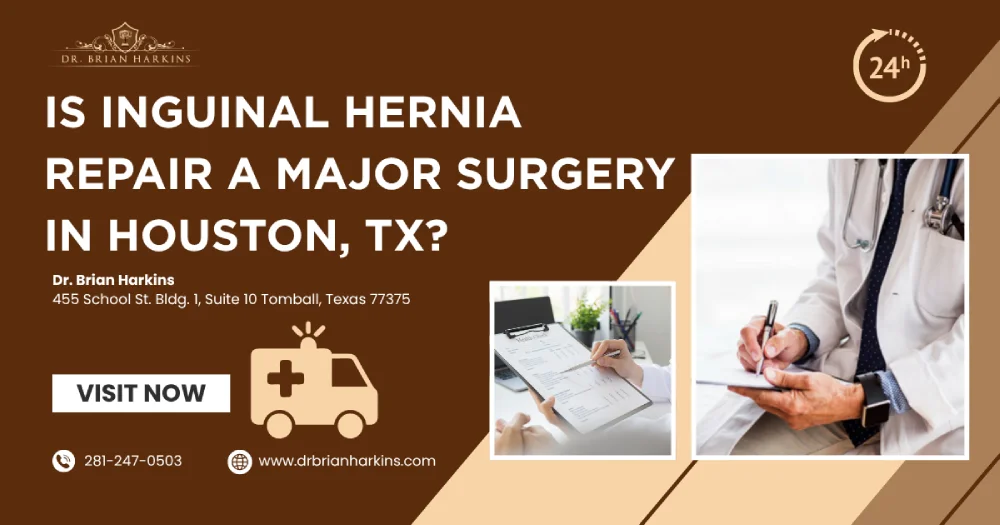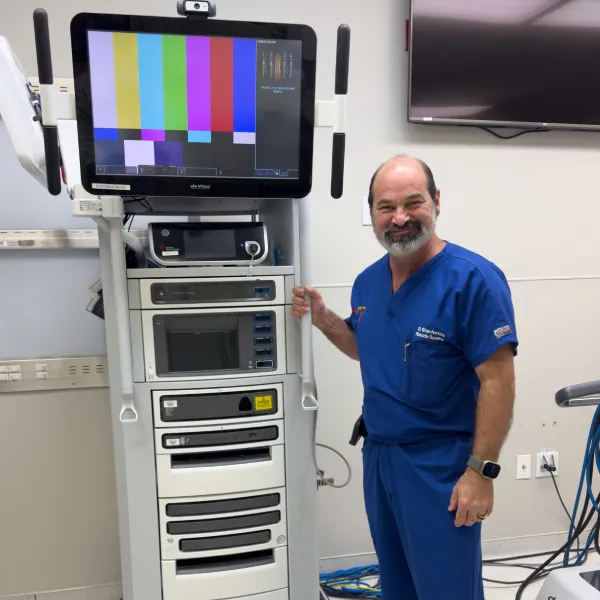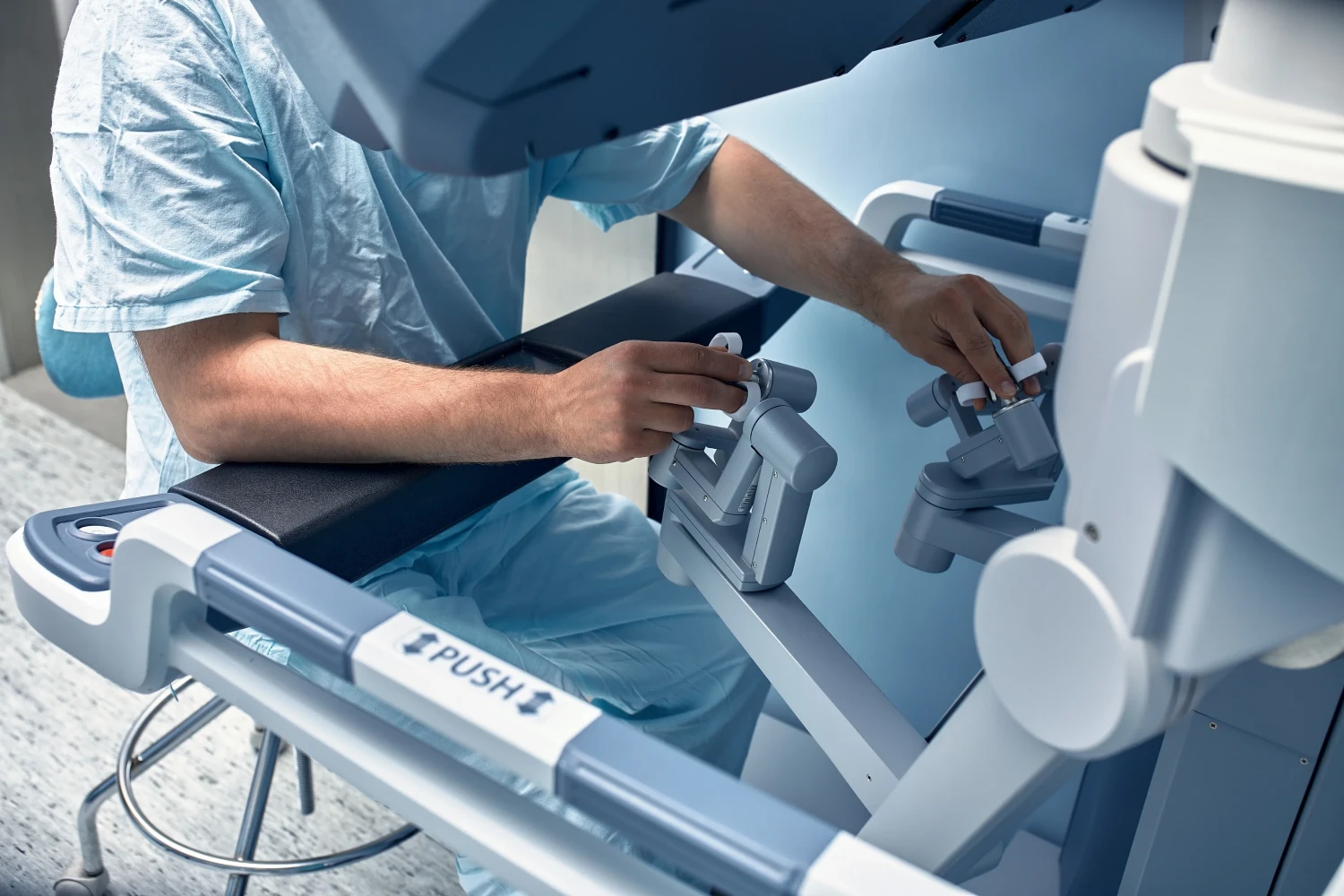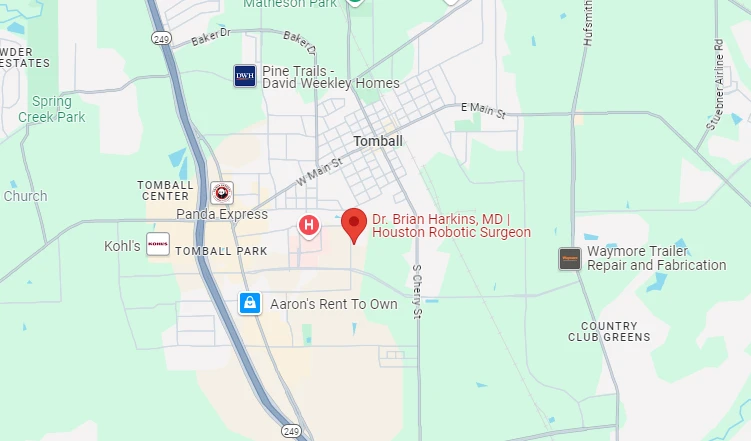
When a hernia bulge in your groin finally pushes you toward a consultation, you may wonder how big the upcoming hernia surgery Houston really is. Modern hernia repair ranges from quick outpatient laparoscopic procedures with several small incisions to complex open reconstructions that involve a larger incision along the abdominal wall. Inguinal hernia repair surgery is frequently labeled “intermediate,” yet it can become a major operation if the defect is huge, bilateral, incarcerated, or strangulated. Houston’s world-class hospitals and ambulatory centers excel at both open surgery and minimally invasive approaches, giving every patient a true menu of surgical options.
An inguinal hernia occurs when intestine or fatty tissue pushes through a weakened area of the muscle wall in the inguinal canal. Left untreated, the protrusion can enlarge, cause groin discomfort, and even strangulate bowel, cutting off its blood supply and becoming a true surgical emergency. Though this article focuses on inguinal defects, abdominal wall hernias come in many varieties—including umbilical, ventral, epigastric, and incisional—and every hernia needs a tailored plan.
Not all hernias can be repaired the same way. Houston surgeons use patient-specific criteria—size of defect, whether the hernia is small or giant, unilateral or bilateral hernias, and health history—to determine the best surgical techniques. Surgery and minimally invasive laparoscopic options each have a spot on the spectrum.
| Classification | Typical Incisions | Anesthesia | Length of Stay | Recovery Time | When It’s Labeled “Major” |
|---|---|---|---|---|---|
| Minor / Watchful Waiting | None | N/A | Office visit | N/A | Hernia is small and asymptomatic; may never require surgery |
| Intermediate | 2–3 keyholes (laparoscopic surgery) | General | Same day | 1–2 weeks | Primary unilateral defect repaired with lightweight mesh |
| Major | 4–8 cm long incision or complex multi-layer lap repair | General | Overnight+ | 4–6+ weeks | Recurrent, strangulated, bilateral, or large ventral repair both sides at once |
Houston’s Texas Medical Center and satellite hospitals offer every modern surgical care pathway—open, laparoscopic hernia, and robotic. Skilled surgeons use advanced imaging and physical exam findings to determine the best approach. Below is an updated overview for patients who want to compare treatment options.
This time-tested open hernia technique uses a 4–8 cm incision in the groin. A flat polypropylene mesh is sutured over the weakened area to reinforce the muscle wall. While recovery time is longer and lifting restrictions stricter, open surgery allows direct vision for complicated anatomy or strangulate scenarios where intestine may need to be resected.
Through several small incisions, the surgeon inserts a camera—called a laparoscope—and specialized instruments to repair hernias from inside the abdomen. Laparoscopic hernia repair offers less post-operative discomfort, quicker recovery, and a faster return to work within two weeks for many patients. Surgeons use lightweight or hybrid mesh behind the fascia, lowering recurrence.
With systems like da Vinci, robotic hernia surgery provides wrist-like dexterity, ergonomic suturing, and high-definition visualization. This approach shines for bilateral, recurrent, or ventral hernia types. The repair can be done with the same mesh materials used in open surgery, yet through the benefits of minimally invasive ports.
No hernia repair may be entirely risk-free, but Houston outcome data show a low complication rate when procedures are performed by high-volume teams. Understanding realistic timelines helps patients plan time off and avoid strenuous activity before the abdominal fascia is fully healed.
Because hernias can be repaired in multiple ways, finding a specialist who offers both open surgery and minimally invasive solutions is crucial. High-volume surgeons use state-of-the-art surgical techniques and a patient-centered approach to lower recurrence and infection.
Always verify in-network status for the surgeon, anesthesiologist, and facility. Outpatient centers often cost less than full hospitals for straightforward cases. If a strangulated hernia is suspected, expect an overnight stay and higher facility fees.
Optimal outcomes start weeks before entering the operating room. Surgeons may recommend a protein-rich diet, smoking cessation, diabetes control, and light diaphragm-breathing exercises to strengthen your core and reduce post-operative coughing.
The minute you leave the Houston recovery room, you begin the gradual journey back to normal activity. Realistic pacing and vigilant observation for warning signs protect your new mesh repair and the surrounding abdominal muscles.
In Houston, inguinal hernia repair is usually a streamlined outpatient procedure, but it qualifies as major surgery when defects are large, recurrent, or complicated by strangulation. Whether you choose open hernia surgery, classic laparoscopic hernia repair, or cutting-edge robotic assistance, partnering with a high-volume surgeon and optimizing pre-operative health gives you the highest odds of a faster, safer recovery. Ready to reclaim comfort? Schedule a thorough evaluation and determine the best treatment option for your unique condition today.
An umbilical hernia develops through a weakened area near the belly button (umbilicus), whereas an inguinal hernia bulges through the groin. Umbilical defects often involve fat or intestine slipping through the fascia around the navel, while inguinal defects protrude along the inguinal canal. Both hernia types may require surgery if causing pain or enlarging.
Most modern repairs use mesh because research shows lower recurrence rates compared with suture-only techniques. That said, small pediatric hernias or certain sports hernias may be closed without mesh. Your surgeon will determine the best material—lightweight, absorbable, or hybrid—based on defect size, location, and prior surgeries.
Select open hernia repairs—including some small inguinal or epigastric defects—can be done under local anesthesia with sedation. This approach avoids general anesthesia risks and may allow even faster discharge. However, large, bilateral, or laparoscopic procedures still require general anesthesia for safety and optimal visualization.
The diaphragm contributes to core stability and intra-abdominal pressure. Controlled breathing exercises strengthen the diaphragm, reduce strain on the repair site, and minimize coughing that could disrupt sutures or mesh. Many enhanced recovery programs incorporate diaphragmatic training starting a few days before surgery.
Light walking begins the first day. Gentle stationary cycling can start around week two, and moderate core workouts—planks or bridges—are usually safe by week six once cleared. High-impact or heavy-lifting routines should wait eight weeks to allow the fascia to regain tensile strength and lower recurrence risk.
Left untreated, a hernia can grow, cause chronic discomfort, and jeopardize intestinal blood supply if it becomes incarcerated or strangulated. Emergency surgery carries higher complication rates than elective repair. Early evaluation lets you weigh elective repair versus watchful waiting before a crisis occurs.
Robotic repairs often have slightly higher facility and equipment fees due to the robot platform. Many insurance plans cover both approaches similarly, but patient responsibility can vary by deductible and co-insurance. Ask for a detailed, itemized estimate that separates surgeon, anesthesia, facility, and mesh charges.
Yes, combined repairs are possible, especially using laparoscopic or robotic methods that access multiple quadrants of the abdomen. Tackling two defects in one session may reduce overall anesthesia exposure and total recovery time, but the decision depends on defect size, location, and your overall health.
Prior surgeries create scar tissue and potential weak spots in the muscle and fascia. Incisions through the abdominal wall can weaken its integrity, allowing abdominal cavity contents to push through when pressure rises from coughing or lifting. Surgeons adjust technique when repairing incisional hernias to reinforce these areas with mesh.
Most surgeons see patients within one to two weeks for the first post-operative visit, then again at six weeks if healing is smooth. Additional appointments are scheduled if you develop redness, swelling, or persistent pain. Long-term, annual physical exams help ensure no new bulge or recurrence forms.




Dr. Brian Harkins is a renowned surgeon specializing in advanced, minimally invasive, and robotic surgical techniques. With a dedication to innovation and personalized patient care, he has transformed countless lives by delivering exceptional outcomes.

I want a website like this, where do i start?